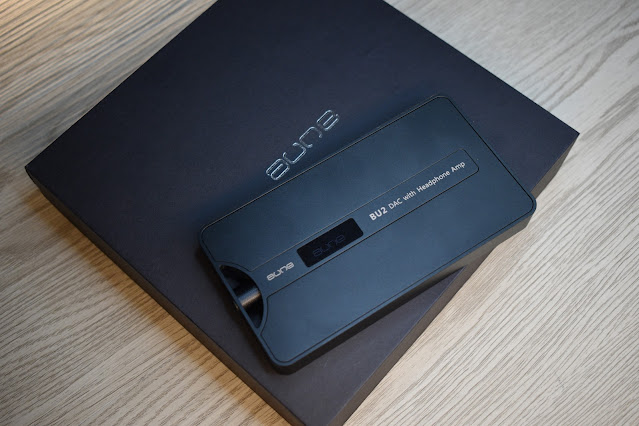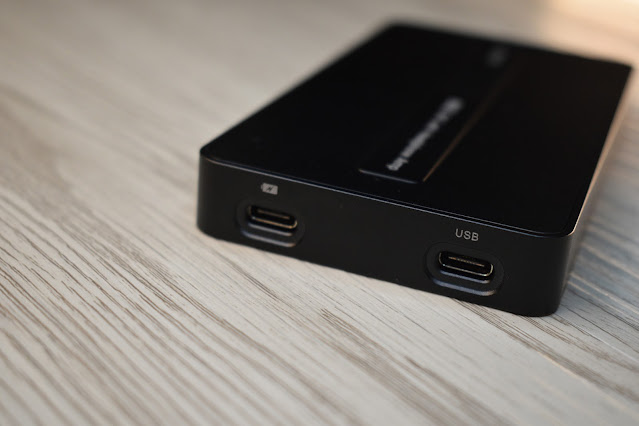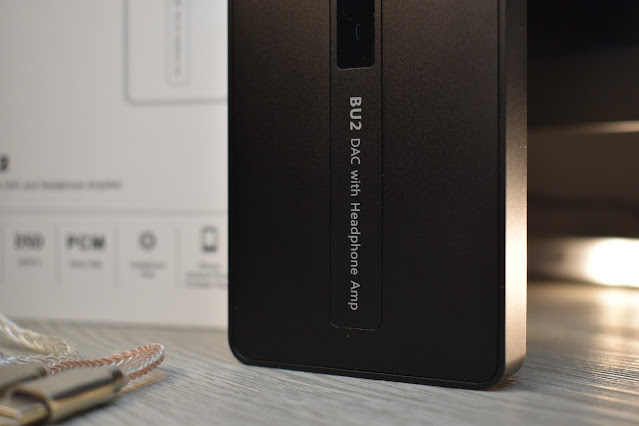- Get link
- X
- Other Apps
English | Español
Also available on YouTube in Spanish: Acho Reviews YouTube
The Aune BU2 was kindly sent to me for review by Aune. They have not requested anything but I will leave a link to the BU2 via their webstore as it is the least I can do.
This means that my review will, as always, attempt to be as unbiased and sincere as possible but you should always consider the fact that it has not cost me anything to try out the BU2.
The official Aune BU2 page: http://en.auneaudio.com/index.php?s=Home/Article/detail/id/514.html
Aune BU2 in Europe: https://www.auneaudio-europe.com/product/bu2-portable-bluetooth-dac/
(as always, these are non-affiliate links, more info here)
Intro…
As I mentioned in my recent review of the Aune Jasper, a set of IEMs that pleasantly surprised me, Aune is a brand that has released quite a few DACs and amplifiers that have interested me, although I have not had a chance to try out their products until now.
The original BU1 was (is) a portable DAC/Amp that attracted me aesthetically, as did (does) the B1s, so when they announced the BU2, I was instantly interested in trying it out.
The BU2 is a fully balanced DAC/Amp, using two ES9318 DAC chips along with four independent amplifiers, a R2R ladder volume control and supports up to 32-bit/768kHz PCM with native DSD512 decoding.
All of this sounds great on paper but I am interested in what it sounds (and performs) like in the real world, so I have been putting it through its paces for around 3 weeks.
Presentation…
The external packaging is a simple white cardboard sleeve, showing an illustration of the unit and a few features, from which a black box, sporting the Aune logo in silver, slides out.
Inside the box we get the BU2 in its own cutout (protected by a plastic bag), along with a smaller box containing a USB-A to USB-C cable, a shorter USB-C to USB-C cable, a 2.5mm TRSS male to 4.4mm Pentacon female adapter cable and a very basic, single page, user manual in English and Chinese.
There is nothing special about the presentation but it is nice that they choose to include the 2.5mm to 4.4mm cable for those who use Pentacon connectors on their headphones/IEMs.
Build and aesthetics…
If you are someone, like me, who likes the aesthetics of the BU1, you will find that the BU2 aims for a much simpler look. A completely black unit, with a small LCD screen on one side and the connections on top and bottom, this does not stand out as much as the BU1 (or B1s) but is certainly not ugly.
The build is completely aluminium except for the two panels around the screen, which are plastic to avoid issues with Bluetooth reception, and even these are well made and do not stand out as being plastic (at first I thought they were aluminium also). This makes the unit very sturdy and feels like it will withstand quite a bit of abuse, especially if we also take into consideration that the volume knob (also metal) is protected by a metal guard (more on that in a moment).
I know that there will be people who complain about Aune opting for a 2.5mm balanced output instead of a 4.4mm, which I can understand. Personally, while I would like the 4.4mm connector, being more robust than the 2.5mm connector (then again, the 6.35mm TRS is also more robust than the 3.5mm but we don’t expect that on a portable unit), I don’t actually have 4.4mm connectors on any of my cables, so I have no real issue with this. As mentioned, Aune also included the adapter which is a nice touch.
At the end of the day, I really don’t have any complaints about the build quality or aesthetics of the BU2. Yes, the BU1 looks more impressive but the BU1 is simple and very well built, with no signs of flaws to my eye.
Functionality…
The BU2 is very simple to use. At the bottom of the unit there are 2x USB-C sockets. The right hand connector is for data connectivity, just connect a cable between the USB output of whatever source you are using to this socket and you are good to go.
The second USB-C socket, on the left, is for charging. Here there are going to be people who complain that it is a separate socket for charging, meaning that you need to use two cables, however, personally I much prefer this. This means that you can use the BU2 (connected to a phone for example) without draining the battery of the phone, and can recharge the BU2 from a power bank while it is in use.
On the top of the unit there are the two headphone outputs, one 3.5mm TRS unbalanced output and one 2.5mm balanced output. These are pretty self explanatory.
In the center, between these two outputs, we find the volume knob which is my only real complaint about this unit.
The knob is recessed and has a metal plate that surrounds it to protect it. I can understand that this was done intentionally to avoid accidentally turning up (or down) the unit while it is in a pocket but it makes volume adjustments rather difficult. I thought about putting this in the “build” part of the review but to be honest, there are no issues with the build, the knob works great and is very robust (and extremely well protected), it is just a pain to adjust without using two fingers, one on each side of the unit. While you are holding the unit, this is not a huge issue, ok, it takes a little longer to make large adjustments, but once you have the unit flush against something, such as the back of a phone/DAP or on a desk, you can only really access one side and it is difficult to make adjustments at all. After 3 weeks of using the device daily, I have sort of got the hang of it, managing to adjust it with only one finger on one side, but in order to do this, the device needs to be secure, otherwise it will just move around instead of the volume knob turning (like when it is on a desk for example).
This is more irritating than anything else and the actual quality of the R2R volume adjustments far outweighs the pain of the usability, but is still irritating nonetheless.
Speaking of the R2R volume control, it is excellent. After having issues with digital volume knobs skipping and analog volume knobs having channel imbalance at low levels, Aune seems to have hit the nail on the head with this setup. There is no channel imbalance even at the lowest of settings and the volume steps are smooth and consistent, allowing you to select the exact volume level every time.
The volume knob also acts as a button, when pressed from the top. This allows you to power the device on and off, with a long press, and also enter the menu which can be seen on the screen.
The screen is placed on the front panel of the BU2 and is a small simple LCD screen with white letters. I must say that I like the choice of screen very much. There is no need for a huge colour screen that eats up battery life, the small LCD screen shows the necessary information without adding to the power consumption (at least not enough to be relevant).
When powering on the BU2, by a long press of the button, you are greeted by the Aune logo followed by the current volume level which, by the way, is remembered from the last use. After this, and at any other time when not interacting with the device, the screen goes into screensaver mode, which is basically the Aune logo followed by a scroll of the letters (A then U then N etc.). This is again a nice touch as it shows that the unit is powered on but does cut the power usage of the screen even more and avoids screen burn to some extent.
By a short press of the button (with the unit on), the device cycles through the menu options.
The first press brings back up the current volume level for reference. The volume can be set from 0 (mute) to 60. If the device is in screensaver mode, a turn of the volume know will also automatically bring up the volume screen for reference.
Another press takes you to input selection, where you can choose between USB (shows a USB logo) and Bluetooth (shows Bluetooth logo) by turning the volume knob. There is no need to press to select, it will automatically keep whatever selection is shown on screen and revert back to screensaver mode after a few seconds.
Two clicks of the button takes you to filter selection. There are 7 filter modes to choose from, each represented by two letters on the screen. The filters are:
SC: brick wall filter
SU: hybrid fast roll-off filter
SL: apodizing fast roll-off filter (default)
SI: minimum phase slow roll-off filter
SH: minimum phase fast roll-off filter
SE: linear phase slow roll-off filter
SD: linear phase fast roll-off filter
Three presses of the button will bring up an image of the current battery level, represented by an image of a battery with bars showing the remaining power and one final press will take you back to the volume level.
As you can see, this is very simple to navigate and use, making the screen useful without the need for more information.
As far as battery life, the specs claim 9 hours in USB DAC mode and I must say that I have no reason to doubt it. I got more than that but I do listen at low levels.
Power…
According to Aune, the BU2 offers 265mW @32 Ohms via the balanced output and 100mW @ 32 Ohms via the single ended output. This is obviously not a huge amount, especially compared to some of the alternatives, in fact, the unbalanced output is the same as the S9 Pro and the balanced output is only slightly more than the usb powered dongle.
This means that some of the more demanding headphones, such as the HD6XX or the HE400se, are lacking a bit of power to drive them to their best. However, I must say that I don’t find the BU2 to sound “anemic” even with these headphones. I have found with other devices with low power outputs that these headphones can lack, especially in bass response, but when powered by the BU2 they don’t seem to suffer as much from these issues. With easier to drive headphones, such as the Ananda, I didn’t feel that there was any issue at all.
With IEMs, there is plenty of power, even with those that need more than usual, such as the iSine or the Dusk, with no complaints from me at all.
Sound…
As you probably already know, I don’t have the necessary equipment to provide measurements of DACs and amplifiers, all I can do is share my experiences with the device. As with all devices, and all people, it is possible that I hear things that my brain makes me hear which maybe don’t exist, but at the end of the day, what I hear is the important part, not what I should hear.
In this regard, I must say that I have spent plenty of time comparing this to various other setups that I have and I find that the BU2 is basically identical to my Modi3+ and Atom that I use daily on my desk at work.
I mean this as a compliment as I find that the Modi+Atom combination is one that I really like for my daily use. It is a clean setup that does not become fatiguing for me, even after many hours at my desk. Obviously the Atom has more power and can drive things like the headphones I mentioned above a little better, but at my usual listening levels, with IEMs and some of my easier to drive headphones, the BU2 could easily replace the Mod+Atom stack on my desk, taking up less space and easily fitting inside my laptop bag for portability.
Even with the Beyerdynamic Custom Studio that I keep at work for when I need a closed back headphone, the BU2 can drive these 80 Ohm / 96dB/mW headphones from its single ended output to volume levels that are plenty for me, without me feeling that I am missing anything.
I mentioned above that the output power of the BU2 is similar to the S9 Pro, however, the BU2 is much smoother and does not become harsh like the S9 Pro can when pushed.
One last thing to mention is Bluetooth. As some of you probably know already, I am not a huge user of Bluetooth and when I do use it, I usually opt for using LDAC either via one of my DACs or via my neckband. The BU2 does not offer LDAC as a codec, being limited to SBC/AAC/aptX and aptX HD, however, I have found that I don’t miss LDAC quite as much on this device as I do on others. Usually I have the BU2 connected to my source (laptop or DAP) via USB and paired with my phone via bluetooth. If I am listening to music and there is something I want to listen to on my phone, with two clicks and a turn, I can swap to my phone. The connection is very quick and once I switch back to the USB input, the BT connection is broken, allowing my phone's BT to go back to whatever else it might be doing (such as the neckband that I use for calls etc.).
Conclusion…
I don’t think I have mentioned the price of the BU2 yet. It costs around 270€, depending on where you buy it from, which is obviously quite a bit more expensive than something like the S9 Pro, however, I feel that it is also a much better product and does not drain my phone or DAPs battery (something very important for me).
As I mentioned, I find the sound to be identical (to my ears) to the Modi3+ and Atom, which is a desktop stack (although small) that comes out at around the same price (here in Europe) but is obviously tied to a power supply. The BU2 is not as powerful but in my opinion makes up for it with its usability and portability, along with a great build quality.
There are obviously things that could be improved (I have yet to find the perfect product at any price range) but my only real complaint is with the difficulty of using the volume knob with one hand.
As someone that has been looking for a self powered, portable and well built DAC/Amp, the BU2 fits my needs very well. I had the Topping NX4 DSD for some time but it finally broke under warranty and I did not replace it. I feel that the BU2 solves the few complaints that I had with the NX4 and I am happy to have finally come across such a device which, while not cheap per se, is not ridiculously expensive.






